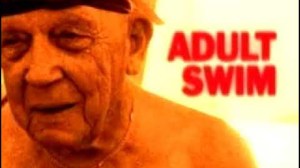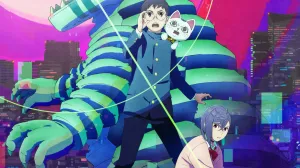Monday night was the finale of HBO’s Chernobyl miniseries and while the events depicted in the five-part series are horrific, chilling, and frequently difficult to watch, it’s important to remember that the series is based on real events. On April 26, 1986 the No. 4 reactor at the Chernobyl Nuclear Power Plant really did explode and set off the worst nuclear disaster in human history to date and for actor Jared Harris, who plays real-life scientist Valery Legasov in Chernobyl, the memories of the disaster are still quite vivid over three decades later.
Videos by ComicBook.com
During a recent appearance on Late Night with Seth Meyers, Harris recounted his own memories of the Chernobyl disaster as experienced from where he was living in England at the time, memories that drive home just how far-reaching the impact of the Chernobyl disaster truly were.
“I remember it very well,” Harris said. “I was living in London and it as all over the news. There was only four TV channels back then and one of them only showed grass growing in the afternoon, literally, grass growing, BBC 2. But they were warning us about the cloud. There was this radioactive cloud that was carrying the particles that was being spewed out from the reactor and they were tracking it and it caused devastating illnesses across Belarus and Ukraine and Germany and parts of Sweden and they were tracking it as it came toward England and they were warning us about don’t go outside if it rains and you couldn’t drink milk and the culled a whole load of anything that grazed on grass, they had to cull all those animals. Yeah, so I remember it really well.”
It’s the spread of the radiation from the Chernobyl blast that is what ultimately clued the world in to the magnitude of the disaster. While the Soviet Union attempted to keep the Chernobyl disaster from the rest of the world, they couldn’t contain the radioactive cloud. It was ultimately detected in Sweden when, in the morning of April 28, 1986, the radiation levels set off alarms at the Forsmark Nuclear Power Plant. It was then determined that the radiation had originated elsewhere, a determination that ultimately led to the Soviet government admitting the accident. It’s a revelation that Chernobyl briefly touches on, just as it also touches on the reaction of the rest of the world — specifically that German children were not being allowed to play outside.
And when it comes to the radioactivity of Chernobyl, while the immediate danger and radioactive cloud has long since passed, the overall danger around the Chernobyl Nuclear Power Plant remains. The reactor — or, rather, the highly radioactive remains of it known as the Elephant’s Foot — may be radioactive for 20,000 years while the area surrounding power plant may be radioactive for anywhere between 20 and several hundred more years depending on its level of contamination.
Did you watch HBO’s Chernobyl? Let us know your thoughts in the comments below or hit me up on Twitter @lifeinpolaroid.








